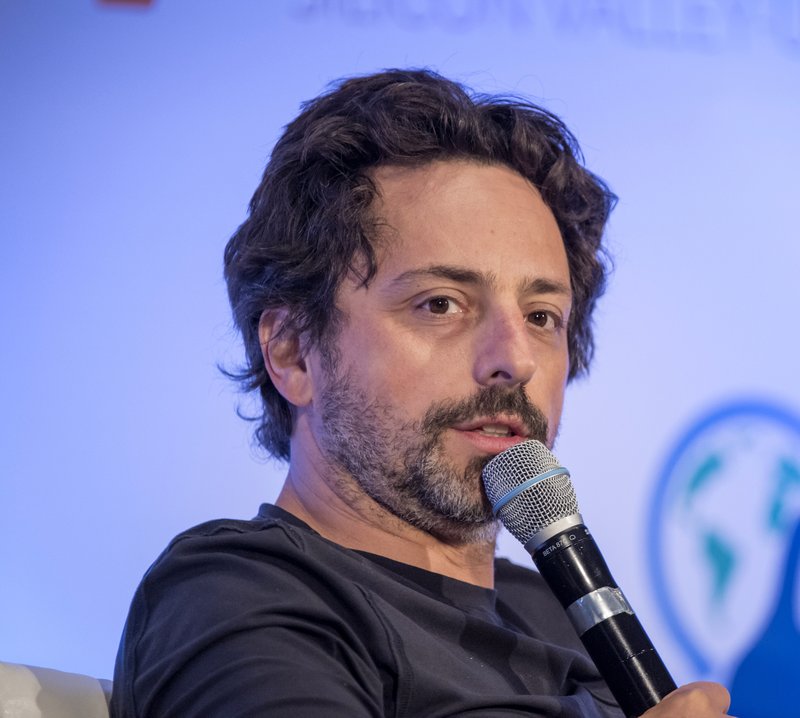Larry Page has his flying cars. Sergey Brin shall have an airship.
Brin, Google co-founder, has secretly been building a huge airship inside Hangar 2 at the NASA Ames Research Center, according to four people with knowledge of the project. It's unclear whether the craft, which looks like a zeppelin, is a hobby or something Brin hopes to turn into a business.
"Sorry, I don't have anything to say about this topic right now," Brin wrote in an email.
The people familiar with the project said Brin has long been fascinated by airships. His interest in the crafts started when he would visit Ames, which is located next to Google parent Alphabet Inc.'s headquarters in Mountain View, Calif. In the 1930s, Ames was home to the USS Macon, a huge airship built by the U.S. Navy. About three years ago, Brin decided to build one of his own after ogling old photos of the Macon.
In 2015, Google unit Planetary Ventures took over the large hangars at Ames from NASA and turned them into laboratories for the company. Brin's airship, which isn't an Alphabet project, is already taking shape inside one. Engineers have constructed a metal skeleton of the craft, and it fills up much of the enormous hangar.
Alan Weston, the former director of programs at NASA Ames, is leading Brin's airship project, according to the people, who asked not to be named discussing the secretive plans. Weston didn't respond to requests for comment.
Weston has a background befitting such an unusual enterprise.
Born to Australian parents, Weston spent some of his youth in Turkey and then ended up at the University of Oxford. There he became a key member of the Dangerous Sports Club -- a group of very intelligent risk-takers that formed in the early 1970s and did things such as catapult people across fields into nets.
Years later, Weston joined the Air Force and did engineering work as part of the U.S. government's Strategic Defense Initiative -- known more broadly as the Star Wars missile defense system. In 1989, Weston oversaw one of the first tests of Star Wars, which aimed to destroy incoming Russian missiles midair with weapons fired from space.
After his stint at the Air Force, Weston joined NASA and worked on a wide number of projects, including the development of a low-cost lunar lander.
In a 2013 radio interview, Weston described plans for an airship that could be used to haul cargo. The idea is that airships could be more fuel-efficient than planes and could carry loads directly to where they're needed, rather than to transport centers like airports or shipping stations.
"New airship technologies have the promise to reduce the cost of moving things per ton-mile by up to an order of magnitude," Weston said in the interview. "It depends on the size of the airship. A larger airship can reduce costs a lot more than a smaller ship, but there's design of a class of vehicles that can lift up to 500 tons that could be actually more fuel-efficient than even a truck."
He went on to describe a prototype he was considering of a helium-based craft that appeared to breathe.
"And so the way that works is that the helium in the main envelope is taken and stored in bags inside the airship at a slightly higher pressure," he said. "As you do that, air is taken in from the outside into essentially like lungs that are attached in the side of the vehicle. So the analogy of breathing is a good one. And the overall lift of the vehicle is equal to the weight of the air that is being displaced by the helium. And as you change that, you can control the amount of buoyancy that the vehicle has."
This technique, according to Weston, would allow the airship to carry 500 tons without the need for a ballast.
Brin's airship is separate from a freight project called Calcifer that was shelved by Google X, the company's experimental research lab, in 2014.
Alphabet CEO Page, Brin's Google co-founder, has funded at least two secretive flying-car projects -- startups Kitty Hawk and Zee.Aero, also separate from Alphabet. Page has begun to take the wraps off one of these efforts -- last week Kitty Hawk released a video showing one of its all-electric vehicles taking off and soaring over a lake with the driver perched on top.
-- Information for this article was contributed by Mark Bergen of Bloomberg News.
SundayMonday Business on 05/01/2017
